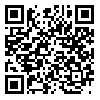BibTeX | RIS | EndNote | Medlars | ProCite | Reference Manager | RefWorks
Send citation to:
URL: http://hii.khu.ac.ir/article-1-2464-en.html
Background and Aim: this study aimed to explore the impact of objective complexity and Product of work task on user's interactive information searching behavior.
Method: The research population consisted of MSc students of Ferdowsi university of Mashhad enrolled in 2012-13 academic year. In 3 stages of sampling (random stratified, quota, and voluntary sampling), 30 cases were selected. Each of these cases searched 6 different types of simulated work tasks. Students’ Interactive Information searching behavior was measured by “loud thinking reports” and “log files”. Also, reliable questionnaire (Cronbach's alpha= 0.88) was applied to measure subjective complexity. Validity of tools was verified through Faculties of KIS at Ferdowsi university of Mashhad.
Results: By increasing level of objective complexity, users view more databases, search engines and web OPACs. Also they use more queries and select resources, visit and analyze more results and spend more time during search process. Totally, they feel less satisfaction and success. It was also found that most participants spend more time to search IR systems related to tasks including intellectual product. Also, they iterate queries, use more search facilities, view, analyze and select more search results and resources. At the end, in spite of more interaction, satisfaction and perception of search success were reported not favorable.
Conclusion: It is necessary to pay attention to work task characteristics in designing interactive and personalized IR systems. So, recommendations raised from this study are appropriate to improve and develop Interactive IR systems.
| Rights and permissions | |
 | This work is licensed under a Creative Commons Attribution-NonCommercial 4.0 International License. |






